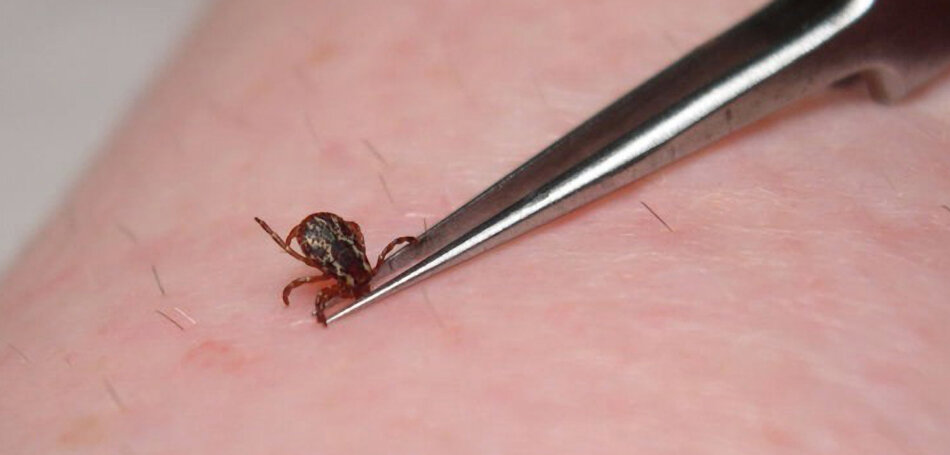Prevent Tick Borne Illnesses
 In clinic we have already had 1 case of tick borne illness this Spring. This is the time of year we always see the most cases of two different tick borne illnesses here in Missouri. The first is Rocky Mountain Spotted Fever (click here to learn more). and the second is Ehrlichioses (click here to learn more). Both of these illnesses can be very serious. Below are some tips for prevention of tick bites. But if your child has had a tick bite, it is extremely important to let us know if he or she develops any rashes, or fevers within 2-weeks of the bite.
In clinic we have already had 1 case of tick borne illness this Spring. This is the time of year we always see the most cases of two different tick borne illnesses here in Missouri. The first is Rocky Mountain Spotted Fever (click here to learn more). and the second is Ehrlichioses (click here to learn more). Both of these illnesses can be very serious. Below are some tips for prevention of tick bites. But if your child has had a tick bite, it is extremely important to let us know if he or she develops any rashes, or fevers within 2-weeks of the bite.
It is important to protect children from tick bites this time of year, here are some tips to help:
- Ticks can live in your own backyard. Clear away brush and tall grass and remove leaves.
- If your child spends time in a tick-infested area, they should wear clothing that covers bare parts of the body, including arms and legs. Button longsleeved shirts at the cuff and tuck shirts into pants and pants into socks or boots. Your child shouldn’t wear sandals that leave part of the feet exposed when in an area where ticks are present.
- Spray the insecticide permethrin on the clothes to decrease the chances that ticks will attach to them. Do not spray permethrin directly on the skin.
- Use a tick and insect repellent that contains DEET (diethyltoluamide) on the skin, applying it lightly to the skin. It needs to be reapplied every 1 to 2 hours. Repellents appropriate for children should contain no more than 20% to 30% DEET. The chemical is absorbed through the skin, so it can be unsafe for children at very high concentrations. Carefully follow the directions on the repellent’s label to avoid any side effects. Do not put repellent on your child’s face, hands, or any irritated skin or open sores. Once your child returns indoors, wash the sprayed areas of the skin with soap and water.
- Take a couple minutes to inspect your child’s body, including the head and neck, behind the ears, and along the hairline, each day. Removing ticks promptly will often prevent disease.
Finally, if you find a tick that has bitten-in, here are some tips to remove it safely:
- Covering the tick with petroleum jelly, nail polish, or rubbing alcohol doesn't work. Neither does touching the tick with a hot or cold object.
- Try one of the following techniques:
Wood Tick Removal: Try Soapy Cotton Ball First
- Apply liquid soap to a cotton ball until it's soaked.
- Cover the tick with the soap-soaked cotton ball.
- Let it stay on the tick for 30 seconds.
- The tick will usually be stuck to the cotton ball when you lift it away.
Wood Tick Removal: Tweezers - click here for more instructions
- Use tweezers and grasp the tick close to the skin (on its head).
- Pull the wood tick straight upward without twisting or crushing it.
- Maintain a steady pressure until it releases its grip.
Deer Tick ("seed tick") Removal
- Tiny deer ticks need to be scraped off with a fingernail or credit card edge.
Tick's Head
- If the wood tick's head breaks off in the skin, remove it.
- Clean the skin with rubbing alcohol.
- Use a sterile needle to uncover the head and lift it out.
- If a small piece of the head remains, the skin will eventually shed it.
- If most of the head is left, call your doctor.
Antibiotic Ointment
- Wash the wound and your hands with soap and water after removal to prevent catching any tick disease.
- Apply antibiotic ointment such as Polysporin to the bite once (no prescription needed).
IMPORTANT: Call Your Doctor If...
- You can't remove the tick or the tick's head.
- Fever or rash in the next 2 weeks.
- Bite begins to look infected (increased redness, swelling, or drainage of yellow/green pus)
